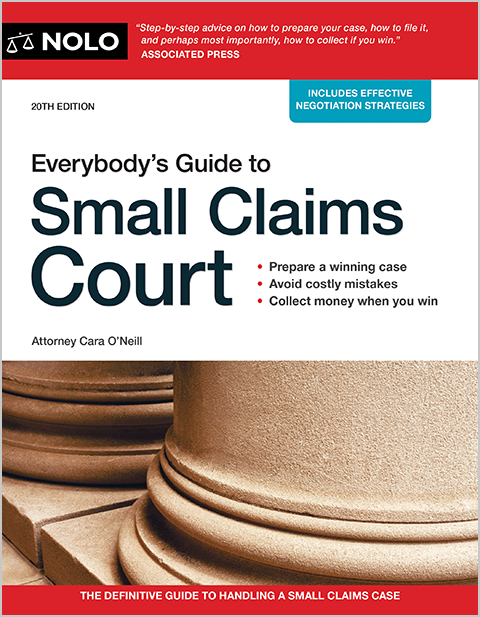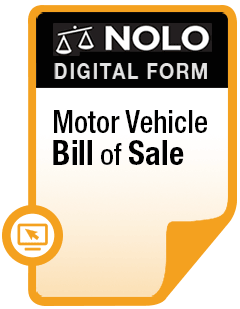The other driver's coverage, your own insurance, and policy limits might all come into play after a car accident.
If you own a car, you're almost certainly paying a car insurance bill every month, but the details of your policy might not be all that clear (or important) to you until you need coverage after a car accident. In this article, we'll discuss:
- liability insurance versus no-fault and similar kinds of car insurance coverage
- how the availability of car insurance and policy limits affect your options when you're thinking about making a claim after a car accident, and
- when your own insurance might help after an accident.
Liability Versus No-Fault Coverage
All forms of car insurance have at least one thing in common: they're all meant to cover losses caused by a car accident. That usually includes:
- car accident injuries
- vehicle damage
- income lost because of the accident
- the cost of a rental car, and
- other out-of-pocket losses resulting from the crash.
And in many cases car insurance also compensates some of the more subjective effects of the accident and injuries, including the claimant's "pain and suffering."
The details of what's covered depend on a number of factors, including where you live and what you've chosen under your policy. But let's start with perhaps the two biggest variations: liability insurance and no-fault.
Liability Car Insurance
Liability (or fault-based) car insurance coverage applies when someone is injured in an accident you cause; it won't pay your medical bills after a crash. But if you (or an authorized driver of your vehicle) are found at fault for a car accident in which another driver, passenger, motorcyclist, bicyclist, or pedestrian is injured, your liability insurance will usually compensate, up to the limits of your coverage, that person's:
- medical bills related to their car accident injuries
- lost income and other financial harm, and
- "general" damages like "pain and suffering."
When we talk about mandatory car insurance—what's required under the law in your state, in other words—we're usually talking about liability insurance (unless you live in a no-fault state, which we'll discuss in the next section). The idea here is that anyone who owns a vehicle needs to be able to show financial responsibility if they end up causing a car accident. In most states, that means vehicle owners need to purchase a certain minimum amount of:
- bodily injury liability car insurance, which covers others who are injured in an accident you cause, usually with a per-person minimum and a per-accident minimum (i.e. $15,000 minimum coverage per person injured in the accident, and $30,000 minimum coverage for all persons injured in the accident), and
- property damage liability car insurance, which covers vehicle damage and other property loss incurred by others in a car accident you cause, usually with a minimum of $5,000 to $10,000.
In most states, vehicle owners have other options for establishing financial responsibility in case of an accident (like making a cash deposit with the state's motor vehicle department, or purchasing a surety bond, for example). But buying a liability car insurance policy is by far the most common method of compliance.
No-Fault Car Insurance
A dozen or so states don't follow a liability-based car insurance scheme. Instead, in these "no-fault" car insurance states, drivers turn first (and often exclusively) to their own car insurance coverage (often called "personal injury protection" or PIP) to pay medical bills and certain other covered losses after a car accident, regardless of who was at fault.
You can only step outside of the no-fault scheme and file a liability claim or car accident lawsuit against the at-fault driver if your car accident injuries meet a certain threshold (dictated by each no-fault state's law), either qualifying as sufficiently "serious" under the statutory rules, or requiring medical care that meets a certain minimum dollar amount.
Learn more about how no-fault car insurance works.
Available Coverage and Policy Limits
From a legal standpoint, whoever causes a car accident usually bears financial responsibility for all resulting harm. But practically speaking, whether (and how much) compensation you can recover after a car accident usually depends on:
- if there's a car insurance policy that covers your accident-related losses, and
- the coverage limit on the policy.
If you're in a car accident and it turns out the other driver was at fault, but they also happened to be driving without insurance, you can always say "see you in court," and file a personal injury lawsuit against them. You may even win your case, but collecting any judgment is another matter. Unless the driver has significant personal assets, you might not see much of any financial recovery.
The same goes for serious car accidents that cause significant injuries, and an at-fault driver who carries only the minimum required liability insurance. Let's say your medical bills add up to $20,000, and the at-fault driver only has $15,000 in bodily injury liability coverage. That driver's insurance company is only obligated to pay you $15,000 (the policy limit). The driver is on the legal hook for the remaining $5,000 (not to mention any additional compensation you're likely entitled to for your pain and suffering), but suing them might not be worth the time and effort if you can't collect on any judgment.
In some situations, your own insurance coverage could step in. Let's look at a few options.
Uninsured Motorist (UIM) Coverage
Uninsured motorist coverage comes into play when the at-fault driver has no car insurance. Here, you would file a claim with your own insurance company for UIM benefits, which should pay for your medical bills and other losses, even "pain and suffering," up to your UIM coverage limits.
UIM is only mandatory in a few states. In most states where it's considered add-on coverage, insurance companies are required to offer it to customers, but customers are free to decline it.
Note that most UIM polices don't cover vehicle damage; you'll usually need to add separate "uninsured motorist property damage insurance" if you want your vehicle covered.
Underinsured Motorist Coverage
Similar to UIM, underinsured motorist coverage applies when the at-fault driver doesn't have enough insurance to cover your losses. But note that you can usually only make an underinsured motorist claim with your insurer if your underinsured driver coverage exceeds the at-fault driver's policy limits. Let's use an example to illustrate this.
Say your case is worth $30,000, but the driver that hit you only has $20,000 in liability coverage. You can make an underinsured driver claim against your own insurer only as long as you have more than $20,000 in underinsured driver coverage. So if you had $50,000 in underinsured driver coverage, you would settle with the negligent driver for $20,000, and then you would try to settle with your insurer for another $30,000.
Learn more about uninsured and underinsured motorist claims.
Note: Your own personal injury protection (PIP) or medical payments (MedPay) coverage are two other options that can help after a car accident with an uninsured/underinsured driver.
Car Insurance Coverage and Vehicle Damage
So far, we've mostly been discussing how car insurance applies to injuries and related losses after a car accident. But most crashes will also result in some measure of vehicle damage, so it's important to keep a few things in mind:
- vehicle damage claims aren't covered by no-fault car insurance, even in "mandatory no-fault" states
- in every state, the at-fault driver's property damage liability insurance can be used to cover damage to your vehicle
- also in every state, your own collision coverage can be used to get your vehicle repaired or replaced after an accident, regardless of who was at fault for the accident.
Next Steps After a Car Accident
If you've been involved in a car accident, it's important to do everything you can to protect yourself, and prepare for any claim you might end up making. It's starts at the crash scene, but it doesn't end there. Learn more about what to do after a car accident, and the importance of getting proper medical care after a crash.
If you've been injured in a car accident and you're looking for legal advice that's tailored to your situation, it might make sense to discuss your options with an attorney. Learn more about how a lawyer can help with a car accident case, and how to go about finding the right attorney for you and your injury claim.
Have you been in a car accident?
Take our free car accident quiz to find out if you're likely to get a settlement.



